The coral reefs of Flower Garden Banks National Marine Sanctuary have thus far been free of coral disease. However, Florida’s coral reefs are currently experiencing a multi-year outbreak of a stony coral tissue loss disease that has now spread over 200 miles across the Florida reef tract. This outbreak is unique due to its large geographic range, extended duration, rapid progression, high rate of coral mortality, and the number of species affected.
The disease appears to be caused by bacteria, and may be transmitted to other corals through direct contact and water circulation, meaning that divers and their gear may potentially spread this disease between sites.
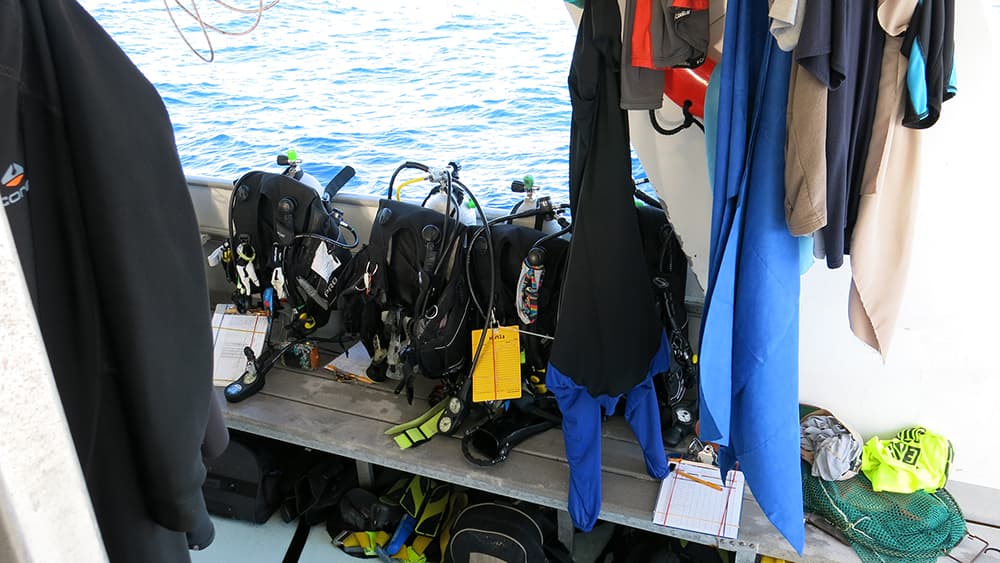
Best Practices for Divers
Just like hand-washing is a common practice to prevent the spread of disease among humans, disinfecting dive gear and following other best practices is recommended to prevent the accidental transmission of coral disease between reefs.
Neoprene gear, such as wetsuits, booties, and gloves, and the internal bladder of buoyancy compensation devices (BCDs) can harbor bacteria and other microorganisms by remaining damp and trapping water. These pathogens can also adhere to other dive and snorkel gear.
Detailed Decontamination Guidelines (180kb pdf)
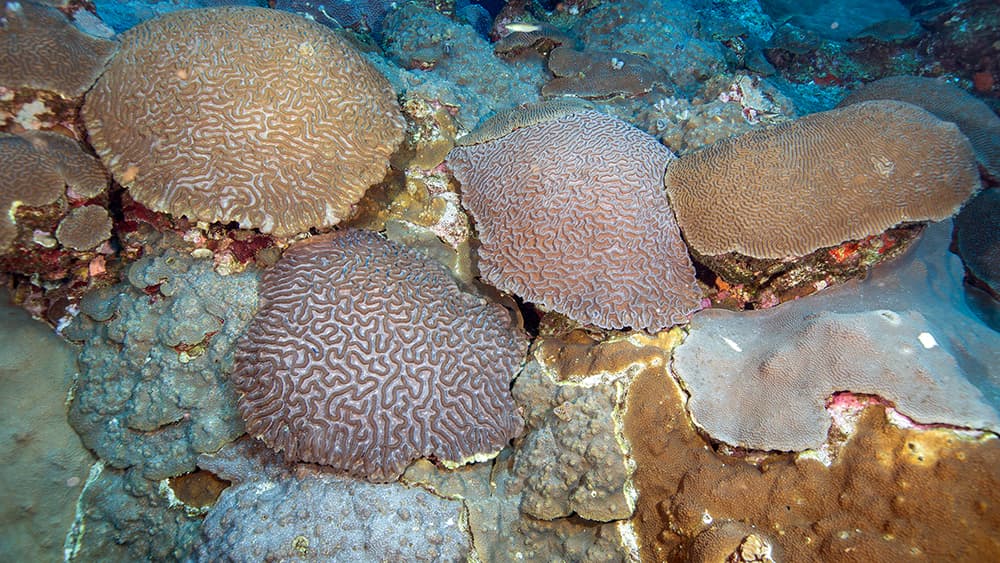
Be Part of the Solution
Since many visitors to Flower Garden Banks National Marine Sanctuary come from other dive destinations, we are asking divers to make use of the following recommendations in the hopes of preventing this coral disease from reaching the sanctuary's otherwise healthy reefs.
These recommendations were developed by Florida Keys National Marine Sanctuary, working with many collaborating partners and dive professionals on the Coral Disease Response Research and Epidemiology team.

Non-sensitive equipment – After each dive, soak equipment (weight belts, tools, etc.) for 10 minutes in a 10% bleach solution (1 qt. bleach/ per 2 gal. water). Rinse with fresh water; air dry.

Wetsuits, buoyancy compensation devices (BCDs), masks, and fins – After each dive, soak these items for 10 minutes in one of the following: 0.5% RelyOn (four 5 g. tablets/gal. water), 1% Virkon S (1.3 oz./2 gal. water), 6.6% Lysol (1 qt./gal. water), or an equal concentration of another quaternary ammonium disinfectant. Soak in fresh water for 10 minutes; air dry.
BCD internal bladders – Pour approximately .5 liter disinfecting solution into the mouthpiece of the exhaust hose while depressing the exhaust button, inflate BCD, and gently rotate in all directions. Allow to sit for 10 minutes. Flush twice with fresh water.
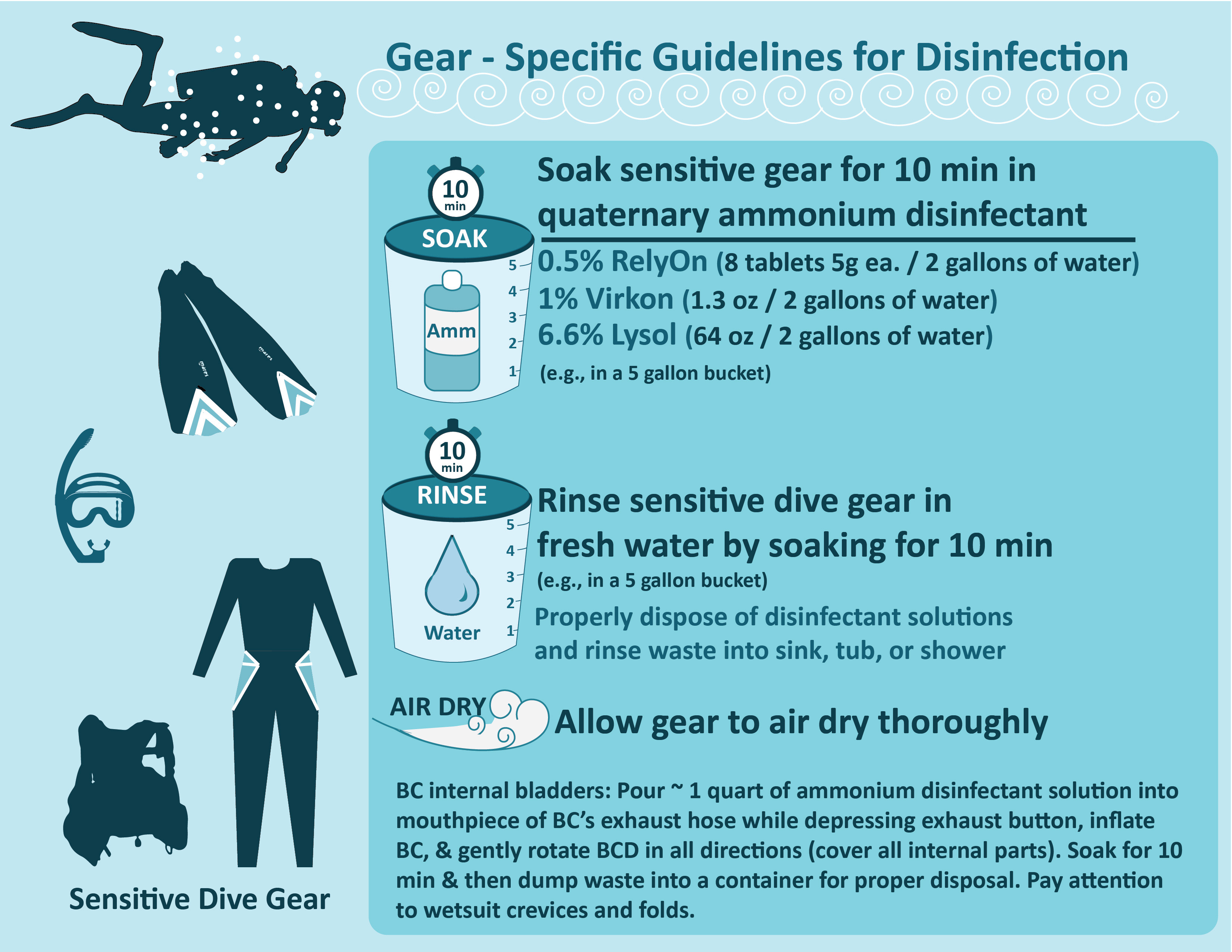
Regulators, computers, gauges, underwater cameras and other sensitive scientific equipment – Soak for 20 minutes in a solution of warm water and antibacterial dish soap or OdoBan (5 oz./gal.). Rinse in fresh water; air dry. Additionally or alternately, thoroughly wipe with isopropyl alcohol.
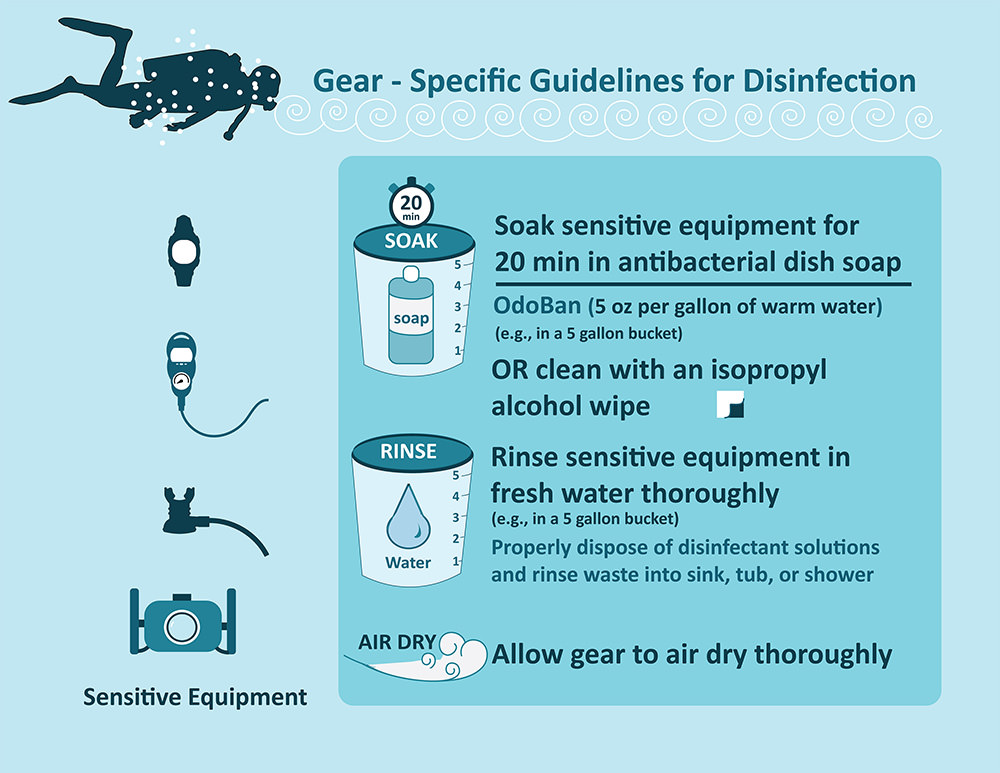
Properly dispose of disinfectant solutions and rinse water in a sink, tub, or shower. Never pour into the ocean or a storm drain.
This protocol does not endorse, recommend, or favor any specific commercial product, process, or service, or the use of any trade, firm or corporation name and is provided only to inform the public. Safety data sheets for chemicals and user's manuals for equipment developed by product manufacturers provide critical information on the physical properties, reactivity, potential health hazards, storage, disposal, and appropriate first aid procedures for handling, application, and disposing of each product in a safe manner.
Additional Protections
Since July 25, 2018, divers visiting Flower Garden Banks National Marine Sanctuary aboard the M/V Fling have been asked to disinfect their gear at the dock using prepared tubs of Chlorohexadine disinfectant. This disinfectant is regularly used to decontaminate dive gear at the local aquarium with no ill effects.
General reef etiquette will also help protect the reefs from harm. For more information, contact flowergarden@noaa.gov.
Be Alert!
While diving in the sanctuary, please stay alert for any signs that stony coral tissue loss disease might have reached the Flower Garden Banks. Consult the the infographic below for more information about what the disease looks like and the most likely species to be affected.
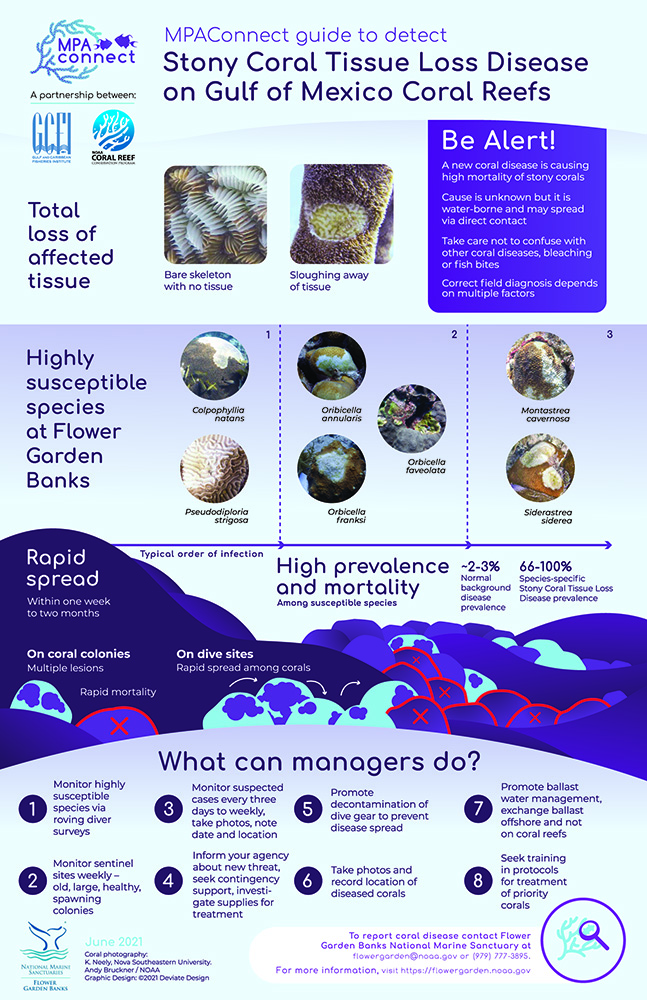
Download Printable Poster file (pdf)
To report any observations of coral disease, please contact Flower Garden Banks National Marine Sanctuary at flowergarden@noaa.gov.

